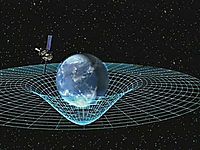
Photo from wikipedia
The temporal resolution uniformity of a time-dilation framing camera is studied, and the ideal photocathode (PC) pulse curve is determined, while the temporal magnification factor is kept constant. To obtain… Click to show full abstract
The temporal resolution uniformity of a time-dilation framing camera is studied, and the ideal photocathode (PC) pulse curve is determined, while the temporal magnification factor is kept constant. To obtain the ideal curve, a series of linear pulses with the same slope are superposed. The variance in the temporal resolution and the number of linear pulses required are compared, while the superposition results with different slopes are used as the PC voltage. As the slope of the linear pulses decreases, the variance decreases, which means that the uniformity of the temporal resolution is improved, but the number of linear pulses required increases. In this study, linear pulses with a slope of 1 V/ps are superposed. Nine linear pulses with a front edge time of 200 ps, amplitude of 200 V, and flat top time of 1 ns are superimposed to approximate the ideal PC pulse curve with a constant temporal magnification factor of 10; the trigger times of the pulses are 0, 0, 0, 185, 200, 350, 450, 605, and 790 ps. When the superposition result is applied as the PC voltage and the measured signal is synchronized to the PC pulse at 128 ps-1 ns, the temporal resolution error is within 5%.
Journal Title: Applied optics
Year Published: 2022
Link to full text (if available)
Share on Social Media: Sign Up to like & get
recommendations!